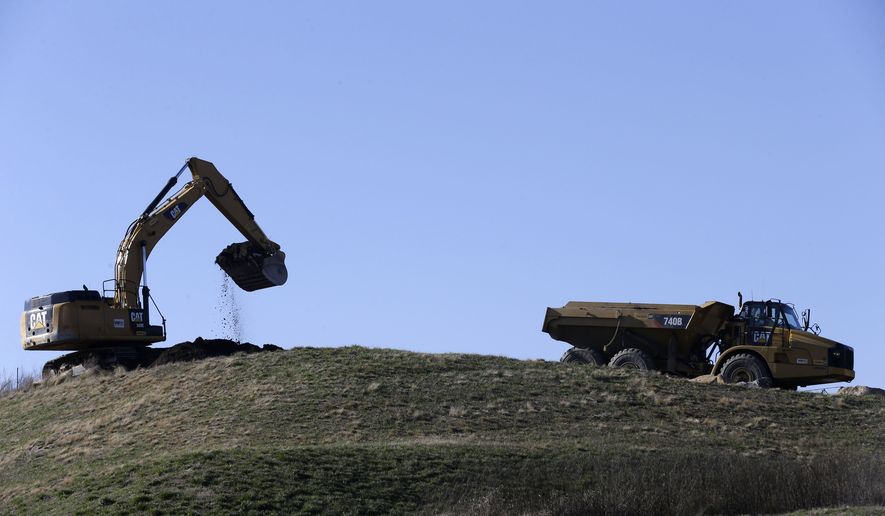Trump push for ‘beautiful, clean coal’ reignites old debate
President Trump’s declaration last week that his administration is pushing “beautiful, clean coal” has reignited a debate about whether such a fuel truly exists, with environmentalists and other critics — even including some industry leaders — charging that “clean coal” often is a misnomer and little more than a political catchphrase.
The term itself, usually used when talking about technology that allows coal plants to capture carbon pollution rather than release it into the air, remains a key bone of contention in the “energy versus environment” debate.
Mr. Trump said in his State of the Union address that he’s ended the war on clean coal, though that, too, is a stretch; the Obama administration funneled billions of dollars into clean-coal research, and its most severe environmental regulations applied to traditional coal-fired power plants and other facilities. Former President Barack Obama often talked highly of “clean coal,” though at the same time his administration instituted policies specifically designed to reduce coal use across America.
Those days, Mr. Trump said, are over.
“In our drive to make Washington accountable, we have eliminated more regulations in our first year than any administration in the history of our country,” the president said in his address last Tuesday evening. “We have ended the war on American energy, and we have ended the war on beautiful, clean coal. We are now very proudly an exporter of energy to the world.”
Immediately afterwards, critics of Mr. Trump pounced on his choice of words, taking issue with the very notion that clean coal exists and with his implication that the Obama administration had tried to stop clean-coal research.“Global warming is one of the most serious issues facing our nation. Coal is not clean. It is the dirtiest fossil fuel and turbocharges global warming. We need to transition to clean, renewable energy,” Environment America, a leading environmental group, said in a post-State of the Union statement.
Last spring, Mr. Trump in his budget proposal sought to slash clean-coal research at the Energy Department, though most of those cuts ended up not coming to fruition after Congress had its say in the spending process.
Last year alone, Energy Department officials say, the administration allocated $250 million toward “research and development in advanced clean coal technologies.”
While there are a variety of efforts to make coal plants more efficient and cleaner, the central component of the clean-coal debate is carbon capture, utilization and storage (CCUS), which the Energy Department says will be key to promoting economic growth in the energy sector, creating jobs, and reducing emissions.
The crown jewel of that approach is the Petra Nova plant in Texas, which began operations in January 2017. The cutting-edge plant captures carbon after combustion, and it’s estimated that the system will capture as much as 1.6 million tons of carbon pollution each year.
Without CCUS technology, much of those emissions otherwise would be released into the atmosphere, and carbon emissions widely are believed to be a key driver of climate change. Leading administration officials, such as Energy Secretary Rick Perry and EPA Administrator Scott Pruitt, have conceded the climate is changing and that humans are, at least, partly to blame.
But in the context of clean coal, it’s hardly settled science that CCUS is a feasible way forward.
Robert Murray, the CEO of Murray Energy Corp., the nation’s leading coal-mining company, has been among the most outspoken critics of the technology.
“Mr. Murray is, and always has been, a staunch supporter of those clean coal technologies which are scientifically and economically proven in the marketplace,” Gary Broadbent, Murray Energy spokesperson, said in a statement to The Washington Times.
“Mr. Murray is not, however, a supporter of so-called ‘carbon capture and sequestration,’ which has been used as a political charade to pretend that politicians in Washington, both Democrats and Republicans, are doing something to help the coal industry, and coal mining families, when they really are not. Indeed, Mr. Murray has made it clear that so-called carbon capture and sequestration is a pseudonym for ‘no coal,’” Mr. Broadbent said.
Mr. Broadbent cited supercritical and ultra-supercritical combustion, high-efficiency, low-emission generation, coal-fired combined cycle generation. fluidized bed combustion. and other technological advances — some of which are being funded by Energy Department money — as more proven, practical ways to reduce emissions and make the burning of coal more efficient.
ca-app-pub-4239477886005093/4384506686


Comments
Post a Comment